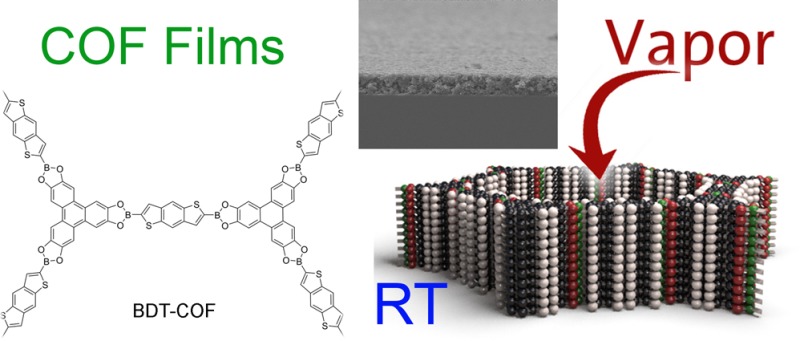- Record: found
- Abstract: found
- Article: not found
Room Temperature Synthesis of Covalent–Organic Framework Films through Vapor-Assisted Conversion

Read this article at
Abstract

We describe the facile synthesis of several two-dimensional covalent–organic frameworks (2D COFs) as films by vapor-assisted conversion at room temperature. High-quality films of benzodithiophene-containing BDT-COF and COF-5 with tunable thickness were synthesized under different conditions on various substrates. BDT-COF films of several micrometer thickness exhibit mesoporosity as well as textural porosity, whereas thinner BDT-COF films materialize as a cohesive dense layer. In addition, we studied the formation of COF-5 films with different solvent mixture compositions serving as vapor source. Room temperature vapor-assisted conversion is an excellent method to form COF films of fragile precursors and on sensitive substrates.
Related collections
Most cited references7
- Record: found
- Abstract: found
- Article: not found
Isoreticular two-dimensional covalent organic frameworks synthesized by on-surface condensation of diboronic acids.
- Record: found
- Abstract: not found
- Article: not found
